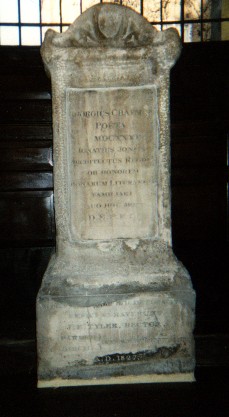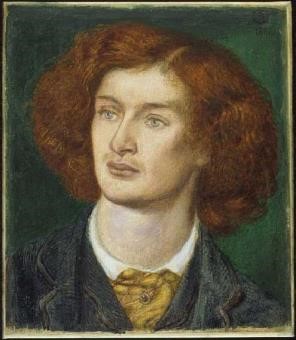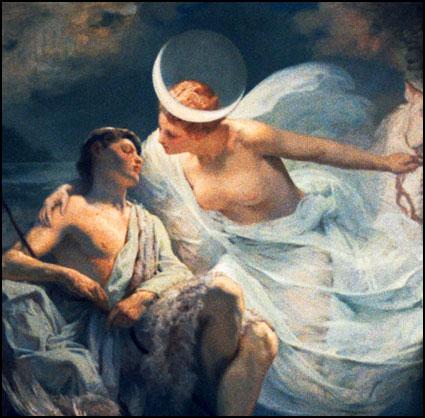|
The Shadow Of Night
''The Shadow of Night'' is a long poem written by George Chapman; it was first published in 1594, in an edition printed by Richard Field for William Ponsonby, the prestigious publisher of Edmund Spenser and Sir Philip Sidney. The poem was Chapman's first significant literary work; it is furnished with abundant notes and references to classical Greek and Roman authors (41 in total, drawn from the ''Mythologiae'' of Niccolo Conti). The title page of the first edition gives the title in both English and Greek (Σκία νυκτός, "Skia nyktos"). The poem's reception as an important development in English verse established Chapman's initial literary reputation, which he would later expand and deepen with his subsequent poems, plays, and translations. Chapman dedicated the work, which he calls a "poor and strange trifle," to fellow poet Matthew Roydon. The dedication contrasts superficial readers, who read verse to "curtail a tedious hour," with those few who "entertained learn ... [...More Info...] [...Related Items...] OR: [Wikipedia] [Google] [Baidu] |
George Chapman
George Chapman (Hitchin, Hertfordshire, – London, 12 May 1634) was an English dramatist, translator and poet. He was a classical scholar whose work shows the influence of Stoicism. Chapman has been speculated to be the Rival Poet of Shakespeare's sonnets by William Minto, and as an anticipator of the metaphysical poets of the 17th century. Chapman is best remembered for his translations of Homer's ''Iliad'' and ''Odyssey'', and the Homeric ''Batrachomyomachia''. Life and work Chapman was born at Hitchin in Hertfordshire. There is conjecture that he studied at Oxford but did not take a degree, though no reliable evidence affirms this. Very little is known about Chapman's early life, but Mark Eccles uncovered records that reveal much about Chapman's difficulties and expectations. In 1585 Chapman was approached in a friendly fashion by John Wolfall Sr., who offered to supply a bond of surety for a loan to furnish Chapman money "for his proper use in Attendance upon the the ... [...More Info...] [...Related Items...] OR: [Wikipedia] [Google] [Baidu] |
The School Of Night
The School of Night is a modern name for a group of men centred on Sir Walter Raleigh that was once referred to in 1592 as the "School of Atheism". The group supposedly included poets and scientists Christopher Marlowe, George Chapman, Matthew Roydon and Thomas Harriot. There is no firm evidence that all of these men were known to each other, but speculation about their connections features prominently in some writing about the Elizabethan era. Name Raleigh was first named as the centre of the "School of Atheism" by the Jesuit priest Robert Persons in 1592. "School of Night", however, is a modern appellation: the theory that this purported school was a clandestine intellectual coterie was launched by Arthur Acheson on textual grounds, in his ''Shakespeare and the Rival Poet'' (1903). The new name is a reference to a passage in Act IV, scene 3 of Shakespeare's '' Love's Labour's Lost'', in which the King of Navarre says "Black is the badge of hell / The hue of dungeons and th ... [...More Info...] [...Related Items...] OR: [Wikipedia] [Google] [Baidu] |
Siege Of Knodsenburg
The siege of Knodsenburg, Relief of Knodzenburg or also known as Battle of the Betuwe was a military action that took place during the Eighty Years' War and the Anglo–Spanish War at a sconce known as Knodsenburg in the district of Nijmegen.van der Hoeven pp 115-16 A siege by a Spanish army under the command of the Duke of Parma took place from 15th to the 25th July 1591. The fort was defended by the Dutch Republic's commander Gerrit de Jong and his company which was then subsequently relieved through the intervention of a Dutch and English army led by Maurice of Orange and Francis Vere respectively on July 25. As a result, the Spanish army was defeated and Parma managed to retreat by getting his army across the River Waal. Background As of 1590 Maurice of Orange decided to strengthen the possibility of besieging Nijmegen, by spreading out the defences and to build a fort, a kind of redan on the city side on top of a piece of high ground. Once built the fort was put into use ... [...More Info...] [...Related Items...] OR: [Wikipedia] [Google] [Baidu] |
Francis Vere
Sir Francis Vere (1560/6128 August 1609) was a prominent English soldier serving under Queen Elizabeth I fighting mainly in the Low Countries during the Anglo-Spanish War (1585–1604) and the Eighty Years' War. He was a sergeant major-general of English and Scottish troops in 1589, a position he retained during fifteen campaigns fighting the Spanish, with almost unbroken success - most notably at the Battle of Nieuwpoort. He enjoyed excellent relations with the Dutch under Maurice of Nassau, working in close co-operation with them to help secure the country for the cause of independence. Family and parliament Francis Vere, born about 1560, was the second son of Geoffrey Vere of Crepping Hall, Essex, a younger son of John de Vere, 15th Earl of Oxford, and Elizabeth Trussell. His mother was Elizabeth Hardekyn (d. December 1615), daughter of Richard Hardekyn (d.1558) of Wotton House near Castle Hedingham. He had three brothers, John Vere (c. 15581624) of Kirby Hall near Castle ... [...More Info...] [...Related Items...] OR: [Wikipedia] [Google] [Baidu] |
Dutch Republic
The United Provinces of the Netherlands, also known as the (Seven) United Provinces, officially as the Republic of the Seven United Netherlands (Dutch: ''Republiek der Zeven Verenigde Nederlanden''), and commonly referred to in historiography as the Dutch Republic, was a federal republic that existed from 1579, during the Dutch Revolt, to 1795 (the Batavian Revolution). It was a predecessor state of the Netherlands and the first fully independent Dutch nation state. The republic was established after seven Dutch provinces in the Spanish Netherlands revolted against rule by Spain. The provinces formed a mutual alliance against Spain in 1579 (the Union of Utrecht) and declared their independence in 1581 (the Act of Abjuration). It comprised Groningen, Frisia, Overijssel, Guelders, Utrecht, Holland and Zeeland. Although the state was small and contained only around 1.5 million inhabitants, it controlled a worldwide network of seafaring trade routes. Through its tradin ... [...More Info...] [...Related Items...] OR: [Wikipedia] [Google] [Baidu] |
Algernon Charles Swinburne
Algernon Charles Swinburne (5 April 1837 – 10 April 1909) was an English poet, playwright, novelist, and critic. He wrote several novels and collections of poetry such as ''Poems and Ballads'', and contributed to the famous Eleventh Edition of the ''Encyclopædia Britannica''. Swinburne wrote about many taboo topics, such as lesbianism, sado-masochism, and anti-theism. His poems have many common motifs, such as the ocean, time, and death. Several historical people are featured in his poems, such as Sappho ("Sapphics"), Anactoria ("Anactoria"), and Catullus ("To Catullus"). Biography Swinburne was born at 7 Chester Street, Grosvenor Place, London, on 5 April 1837. He was the eldest of six children born to Captain (later Admiral) Charles Henry Swinburne (1797–1877) and Lady Jane Henrietta, daughter of the 3rd Earl of Ashburnham, a wealthy Northumbrian family. He grew up at East Dene in Bonchurch on the Isle of Wight. The Swinburnes also had a London home at Whitehall G ... [...More Info...] [...Related Items...] OR: [Wikipedia] [Google] [Baidu] |
Elizabethan Era
The Elizabethan era is the epoch in the Tudor period of the history of England during the reign of Queen Elizabeth I (1558–1603). Historians often depict it as the golden age in English history. The symbol of Britannia (a female personification of Great Britain) was first used in 1572, and often thereafter, to mark the Elizabethan age as a renaissance that inspired national pride through classical ideals, international expansion, and naval triumph over Spain. This "golden age" represented the apogee of the English Renaissance and saw the flowering of poetry, music and literature. The era is most famous for its theatre, as William Shakespeare and many others composed plays that broke free of England's past style of theatre. It was an age of exploration and expansion abroad, while back at home, the Protestant Reformation became more acceptable to the people, most certainly after the Spanish Armada was repelled. It was also the end of the period when England was a separate r ... [...More Info...] [...Related Items...] OR: [Wikipedia] [Google] [Baidu] |
Elizabeth I Of England
Elizabeth I (7 September 153324 March 1603) was List of English monarchs, Queen of England and List of Irish monarchs, Ireland from 17 November 1558 until her death in 1603. Elizabeth was the last of the five House of Tudor monarchs and is sometimes referred to as the "Virgin Queen". Elizabeth was the daughter of Henry VIII and Anne Boleyn, his second wife, who was executed when Elizabeth was two years old. Anne's marriage to Henry was annulled, and Elizabeth was for a time declared Royal bastard, illegitimate. Her half-brother Edward VI ruled until his death in 1553, bequeathing the crown to Lady Jane Grey and ignoring the claims of his two half-sisters, the Catholic Church, Catholic Mary I of England, Mary and the younger Elizabeth, in spite of Third Succession Act, statute law to the contrary. Edward's will was set aside and Mary became queen, deposing Lady Jane Grey. During Mary's reign, Elizabeth was imprisoned for nearly a year on suspicion of supporting Protestant reb ... [...More Info...] [...Related Items...] OR: [Wikipedia] [Google] [Baidu] |
Lunar Deity
A lunar deity or moon deity is a deity who represents the Moon, or an aspect of it. These deities can have a variety of functions and traditions depending upon the culture, but they are often related. Lunar deities and Moon worship can be found throughout most of recorded history in various forms. Moon in religion and mythology Many cultures have implicitly linked the 29.5-day lunar cycle to women's menstrual cycles, as evident in the shared linguistic roots of "menstruation" and "moon" words in multiple language families. This identification was not universal, as demonstrated by the fact that not all moon deities are female. Still, many well-known mythologies feature moon goddesses, including the Greek goddess Selene, the Roman goddess Luna, and the Chinese goddess Chang'e. Several goddesses including Artemis, Hecate, and Isis did not originally have lunar aspects, and only acquired them late in antiquity due to syncretism with the de facto Greco-Roman lunar deity Selene/Luna. ... [...More Info...] [...Related Items...] OR: [Wikipedia] [Google] [Baidu] |
Orpheus
Orpheus (; Ancient Greek: Ὀρφεύς, classical pronunciation: ; french: Orphée) is a Thracian bard, legendary musician and prophet in ancient Greek religion. He was also a renowned poet and, according to the legend, travelled with Jason and the Argonauts in search of the Golden Fleece, and even descended into the Underworld of Hades, to recover his lost wife Eurydice. Ancient Greek authors as Strabo and Plutarch note Orpheus's Thracian origins. The major stories about him are centered on his ability to charm all living things and even stones with his music (the usual scene in Orpheus mosaics), his attempt to retrieve his wife Eurydice from the underworld, and his death at the hands of the maenads of Dionysus, who tired of his mourning for his late wife Eurydice. As an archetype of the inspired singer, Orpheus is one of the most significant figures in the reception of classical mythology in Western culture, portrayed or alluded to in countless forms of art and popular ... [...More Info...] [...Related Items...] OR: [Wikipedia] [Google] [Baidu] |
Rival Poet
The Rival Poet is one of several characters, either fictional or real persons, featured in William Shakespeare's sonnets. The sonnets most commonly identified as the Rival Poet group exist within the Fair Youth group in sonnets 78– 86. Several theories about these characters, the Rival Poet included, have been expounded, and scholarly debate continues to put forward both conflicting and compelling arguments. In the context of these theories, the speaker of the poem sees the Rival Poet as a competitor for fame, wealth and patronage. Possible candidates Among others, George Chapman, Christopher Marlowe, Samuel Daniel, Michael Drayton, Barnabe Barnes, Gervase Markham, and Richard Barnfield have been proposed as identities for the Rival Poet. George Chapman Chapman was a prominent poet and translator of Homer. Scholars speculate that Shakespeare was familiar with his work, having read part of his translation of the ''Iliad'' for his own ''Troilus and Cressida'', a dramatic re ... [...More Info...] [...Related Items...] OR: [Wikipedia] [Google] [Baidu] |

.jpg)

.jpg)



